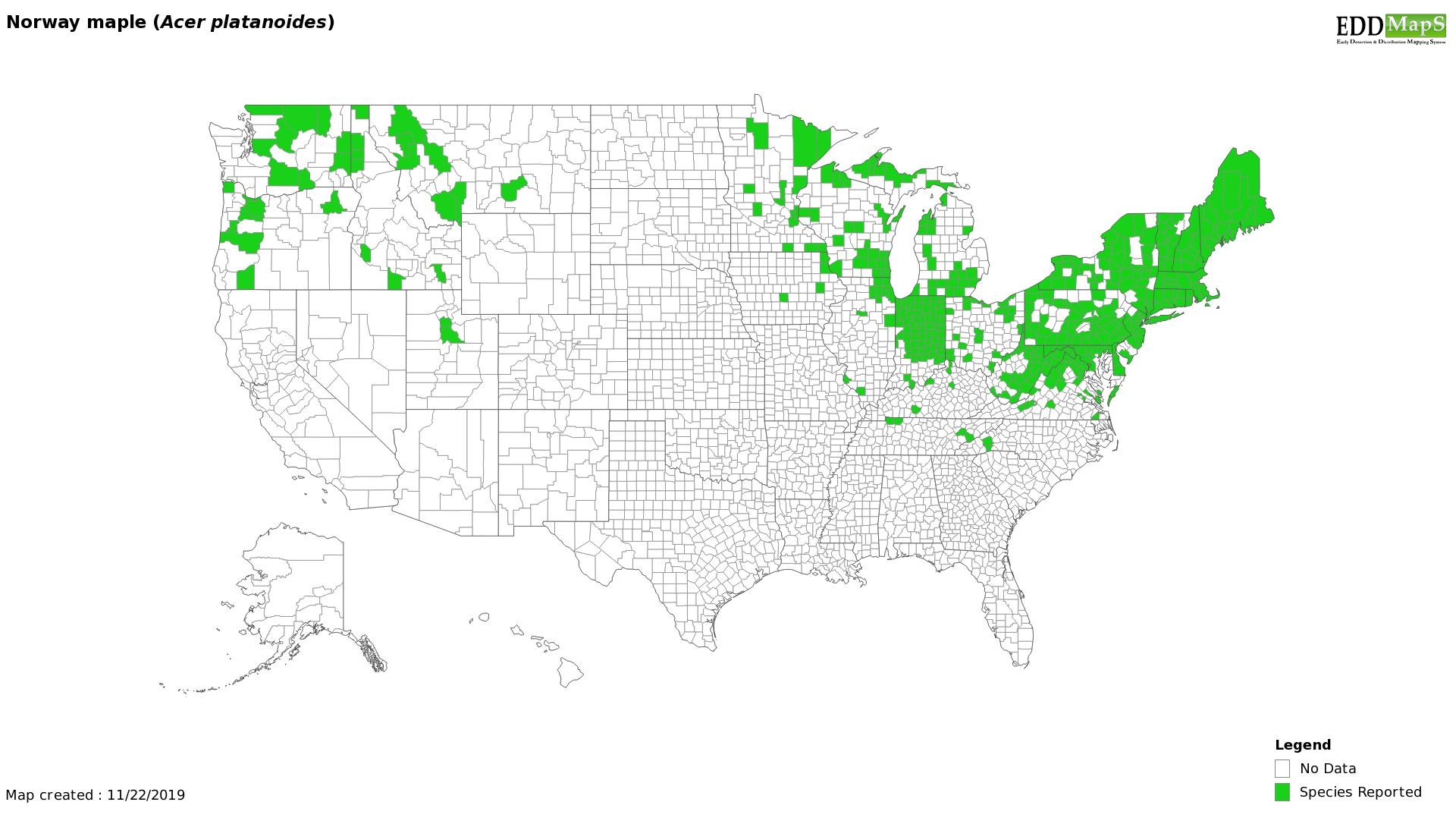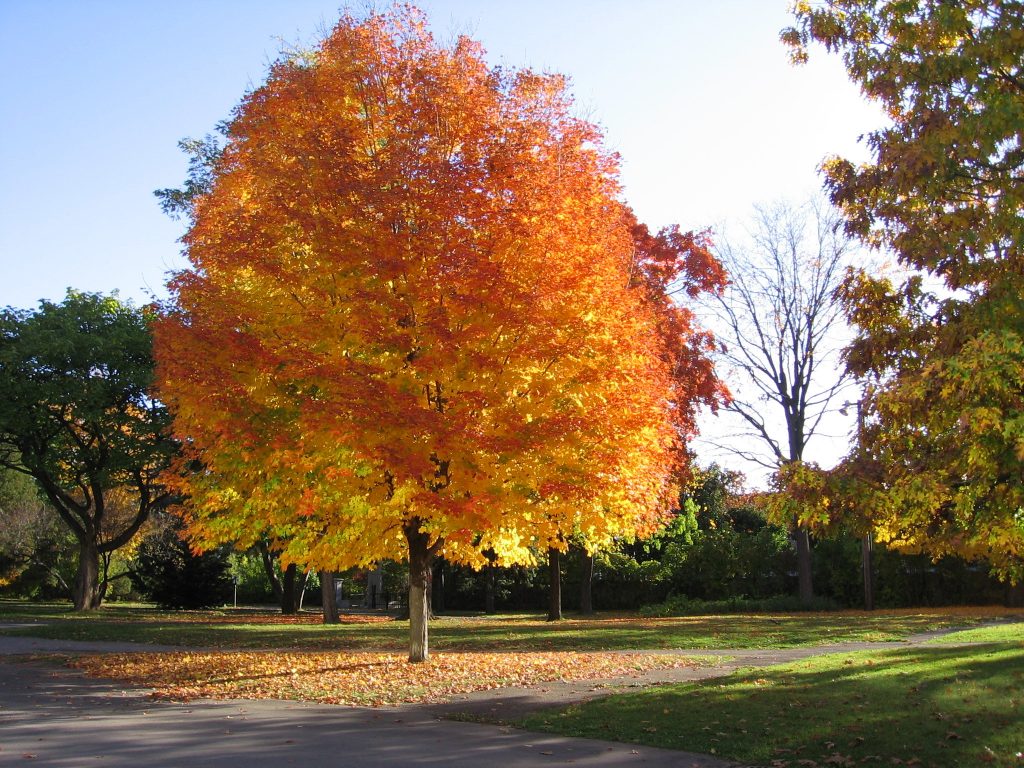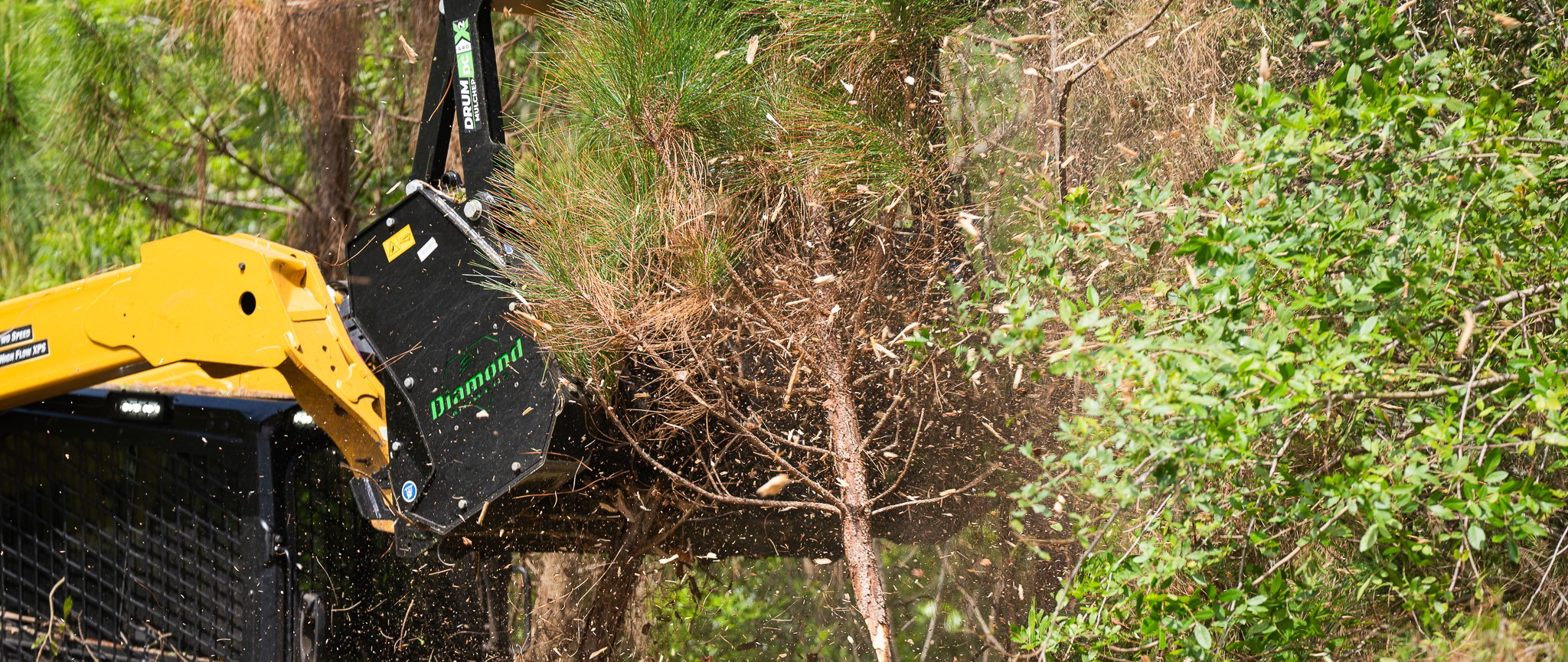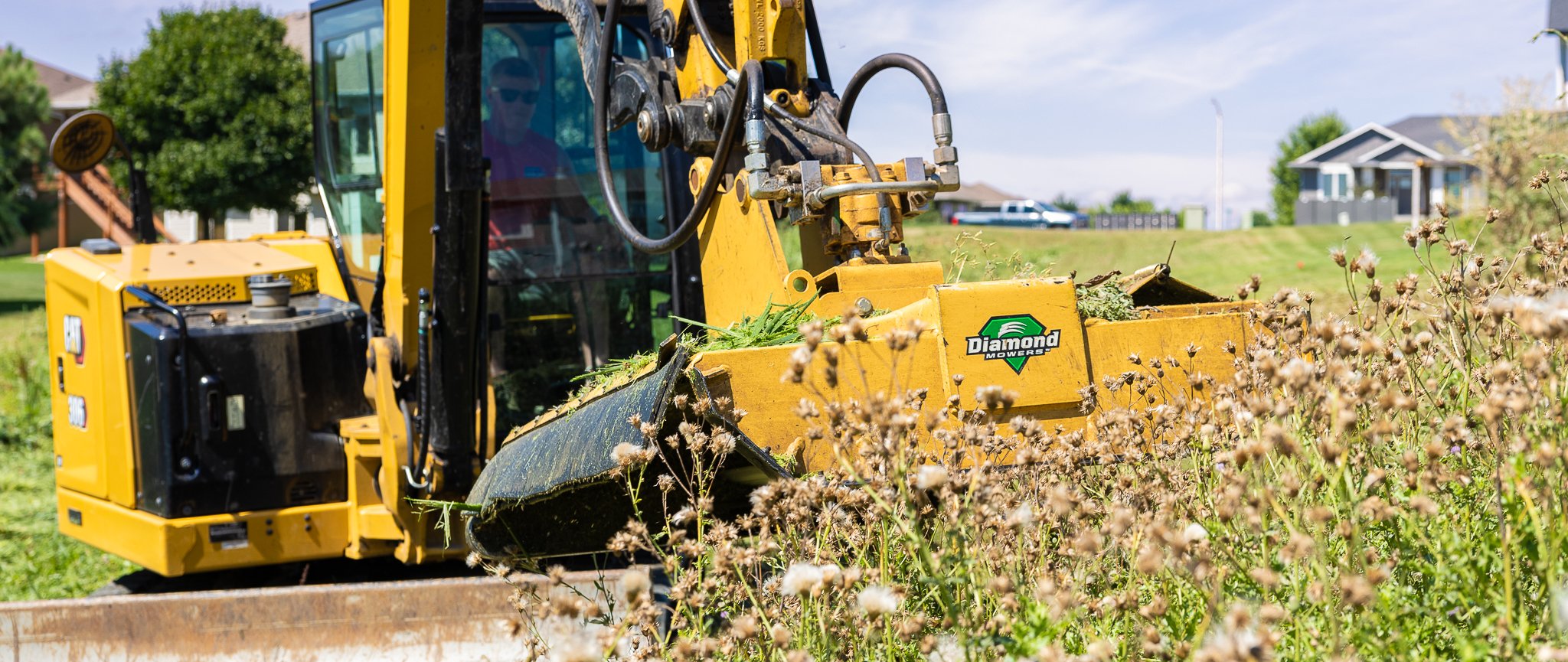Noxious Norway Maple
Nov 27, 2019 . 1 min read
.jpg)
.jpg?width=1000&name=1280px-Spitz-Ahorn(mbo).jpg)
The Norway maple is a species of maple native to eastern and central Europe and western Asia. It invades native US woodlands and prevents ground growth due to dense canopy.
Norway maple can be found across the United States. It is planted as a street and shade tree as far north as Alaska. It is favored for planting, especially in urban settings, due to its tall trunk and tolerance of poor, compacted soils and urban pollution.
In natural settings, it has become an invasive species that covers the Northwest, Midwest, and Northeast.

WHAT NORWAY MAPLE LOOKS LIKE
- Tree that usually grows 40-60 feet in height - but can grow up to 100 ft
- Has green lobed leaves that are 4-7 inches wide - and in the fall the leaves turn yellow
- Flowers appear in April and May and are yellow-green
- Samara fruit, referred to as helicopter and whirlybird, develop which are green. These turn yellow and brown in the fall

ECOLOGICAL THREATS
- Out-competes native tree species as it is also very shade tolerant
- Wildflower and plant diversity is reduced beneath because it forms a more dense canopy
- Although sold primarily as a boulevard tree, it can spread by seeds into disturbed forest communities
- It is widely sold in nurseries in the U.S. making it more commonly found
SOLUTIONS
Mechanical control methods tend to works best with controlling and eradicating Norway maple. The key to the control of Norway maple is continued annual maintenance and killing of every root crown. It may take several years for complete obliteration - which involves cutting and mulching, pulling, and cut & covering of stumps. For continued maintenance, we recommend our Skid-Steer Forestry Disc Mulcher.
Watch the Diamond Skid-Steer Forestry Mulcher in Action:



